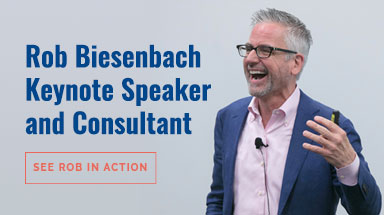
Having been there myself, I really feel for the speaker who suffers a bad introduction—one that’s uninspired, poorly written and carelessly delivered.
If you ever find yourself with this responsibility, here is how to introduce a speaker the proper way. (First, though, check out these three great tips on How Not to Introduce a Speaker.)
1. Make Your Intro Short
My rule of thumb is that the introduction should be no longer than the speech itself. I’m being facetious, but I’ve seen my share of intros that make me wonder if the actual featured speaker is ever going to get a turn at the podium.
So how long should the intro be? I don’t have a hard-and-fast rule, but as with any communication it should be as long as it needs to be to serve its purpose—no more and no less.
That may be a minute or three minutes. In general, though, shorter is safer.
2. Do Your Research
If it’s a professional speaker you’re introducing, chances are she already has a ready-made intro for you to use.
I provide a pre-written intro to organizations that hire me. I always make clear that they’re free to use it as a starting point or to use it in its entirety. Either way is fine with me.
So check for that first. Otherwise, go online and find out what you can. You could reach out to the speaker herself and ask what she’d like to see highlighted.
3. Pique the Audience’s Interest
If you’re having trouble boiling things down, keep in mind that you’re not there to give the speaker’s entire life story. There’s probably a bio in the program for that.
Instead, your job is to provide enough of a glimpse that will make the audience sit up and want to know more.
4. Provide Context
Part of your job is to provide the necessary context for your audience.
Why was the speaker chosen to speak at this event? What’s the valuable perspective he’s been asked to provide and how does that fit in with either the event’s theme or the organization’s mission?
5. Make it Personal
Ideally, the introducer has some personal connection either to the speaker or the topic. More realistically, intro duties are assigned to someone, either randomly or by virtue of that person’s position in the organization.
If you’re not familiar with the speaker, go back to your research and see if you can find an answer to the question, “I’m really excited to hear this presentation because …”
6. Tell a Story
I’ve said it many times: nothing beats a well-told story. Stories trump facts and data. And a person’s job titles and awards are just that—data.
Not a natural-born storyteller? Here’s a cheat for you: if your speaker is prominent enough, you might find others have already told his story—in the media, on blogs and elsewhere.
Look for any anecdotes you can use, and cite the source if it’s an important one. As in, “Forbes called our speaker a wunderkind. When he was just seven years old …”
What if the speaker you’re introducing isn’t a high-profile figure? Read through what you can find, even if it’s an online bio or LinkedIn profile. Is there some small detail that captures your imagination? Focus on that. If you’re intrigued, it’s likely your audience will be, too.
7. Practice, Practice, Practice
Far too often it’s obvious that the introducer is reading the intro for the very first time at the podium. The unsurprising result is a sloppy and lackluster introduction.
Lack of preparation is disrespectful to the speaker and to the audience. So do everyone the courtesy of practicing the intro a few times before the event.
And for god’s sake, confirm the pronunciation of the speaker’s name! (This one really hits close to home.)
8. Seek Professional Help
People hire speechwriters all the time, so there’s no reason you shouldn’t consider a professional writer to help you pen a winning intro. Especially if you’re introducing a major figure.
I’ve written intros for VIPs like Tony Blair and Tim Geithner. The people who hired me were very grateful and remarked that they got a lot of positive feedback, from the audience and the speakers themselves.
In fact, one VIP we talked to ahead of time specifically requested that we not simply read his bio.
Not Enough Time to Do It Right?
If you don’t have time for this kind of preparation, if you see your duties as a chore or you treat the introduction like a perfunctory gesture, please, do us all a favor: pass the intro duties to someone who will put in the necessary work.
Your speaker deserves it and, most of all, your audience deserves it.
Photo Credit: SpunkyMonQy via Compfight cc




